Otter fur coat

Otter fur is an elite and rare fur, since animals do not live in captivity and furs are obtained only by hunting. Such a fur coat is not often found in a store, and the cost will definitely not be low.



Features and Benefits
The fact is that an otter fur coat is one of the most durable, it will last at least twenty seasons, while retaining all its qualities. Unpainted and unpickled otter fur is the standard, it is estimated at one hundred points and the rest of the fur is judged in comparison with this fur.



Another advantage in the quality of fur... Since the otter lives both in water and on land, it has a skin that is not afraid of moisture, wind and frost, its fur does not freeze with icicles in cold weather, does not get wet and does not fall off.
The peculiarity of otter fur is in its incomparable density.

The otter has a very dense undercoat, the hairs are so tightly adjacent to each other that you cannot see the flesh on the product, even if you blow hard on the fur coat. Thus, the otter coat will protect its owner from any bad weather.

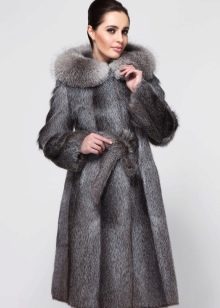
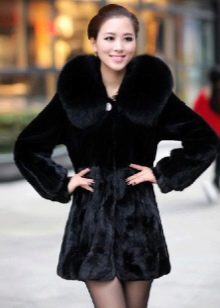
Styles
An otter fur coat is a kind of investment, so you need to pay attention to the choice of style. It should be a fur coat for all times, and even if it sags in the closet, “skipping” several seasons, putting it on again, the owner should look exquisite, like in an expensive piece of jewelry.

In this regard, it is necessary to give preference to the classics - a straight cut or a "robe" style, which is wrapped and tied with a belt.
It is worth paying attention to the fact that the otter has a rather dense flesh, so a “loose” fur coat is becoming a popular solution. She will not stand with a stake and will sit better on the figure.






A trapezoid fur coat or otter fur coats, the collar of which is made of similar fur - for example, a beaver, will look great.



You can also bet on a combination of plucked and non-plucked otter fur - the "body" of the fur coat can be made of light, soft, like plucked fur, which will gently envelop the silhouette, and the collar or hood - from longer, thicker fur, which the designers left in intact.
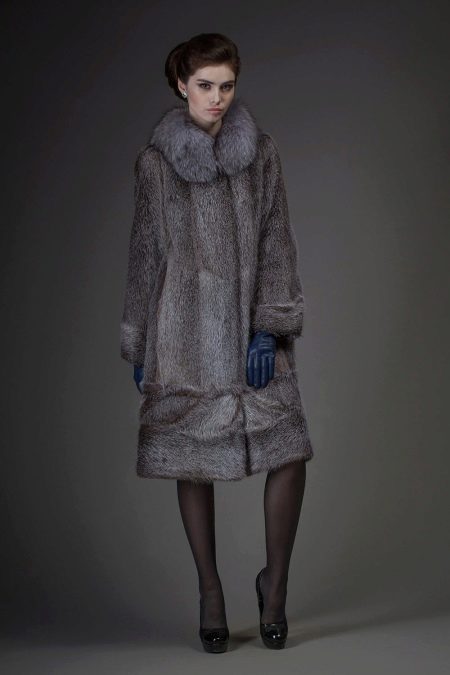
If you are sure that a certain style suits you, regardless of fashion, feel free to make your choice! From the otter they sew trapezoid coats, balloon coats or "bat" coats. Remember that a woman who is confident in her irresistibility always looks stunning.



Length and color
Otter fur is too valuable to be dyed, so most of the models of these coats are natural in color. Dark animal skins are highly prized, but light shades are also acceptable. Otters have a slight spread in fur shade - from black to dark brown. Lighter animals are less common, their skins have reddish tones.



Sometimes otter coats are tinted to add depth to the color. Often, designers choose shades of red that go well with brown fur. In the muted color of this nuance, you may not even notice, but in the sun the tinted fur will burst into flames.

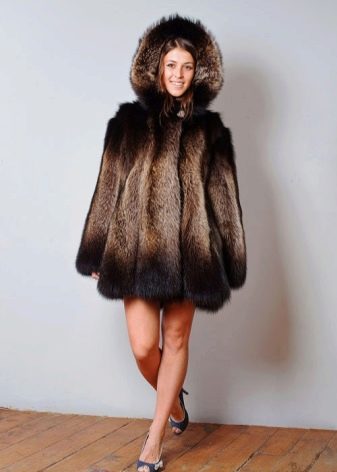
As for the length of the product, this is a matter of taste and finance. The longer the otter coat, the more expensive it is. But at the same time, its owner can be sure that she will be comfortable in any weather. And in the bitter frost, and in the slushy winter, when the humidity is high and the winds are raging. This is a great option for long walks.
Short models are suitable if you often go behind the wheel or just do not like when outerwear restricts movement.



How to choose?
We have already said that otter fur is rare, so the first thing you should do when choosing a fur coat is to ask the seller for a certificate for the fur. There should only be an otter and no more marks. Choose a trusted seller, it is better if it is a large and well-known fur shop. You should not buy an otter at traveling exhibitions - if something goes wrong with the fur coat, you will have no one to make a claim.

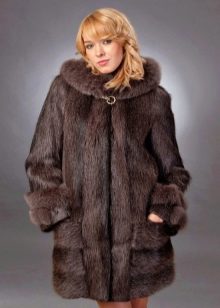

Self-assessment of the fur is also important. Examine the product carefully - the fur should shimmer in the light, be dense, springy at hand. If the fur is dull and lifeless, this means either that the product is rather old, or the fur coat was sewn from a sick, weakened animal. Such a thing will not last long.

A nutria fur coat must also be sniffed. As a waterfowl, nutria has oily skin that protects it from moisture. If the skins are not dressed properly, the product will start to smell, and the smell will not go away with time, but, on the contrary, will intensify.
Shake the fur coat - it should not rustle or creak, if the fur is squeezed, it should immediately return to its shape. If the hairs are deformed, break, or stick out in different directions, the product is of poor quality. Also take a look at the back of the skins.
Self-respecting manufacturers do not sew the lining tightly so that the buyer can be sure of the quality. The otter has dense, thick skin that distinguishes it among many types of furs. The flesh should be elastic, soft and white. The seams on such a product should be even, soft, not have distortions or knots that can be felt.

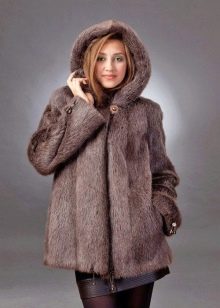





Pay attention to the nuances that are personally important to you. Is the fur coat heavy? Is it comfortable to move in it or, on the contrary, to sit? Does the uncomfortable fastener bother you? When purchasing a product that can last fifteen to twenty years, it is foolish to think that all these are trifles.









